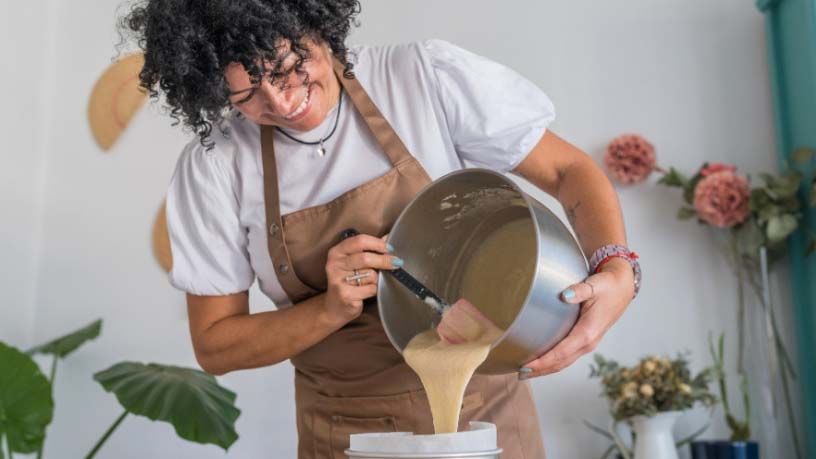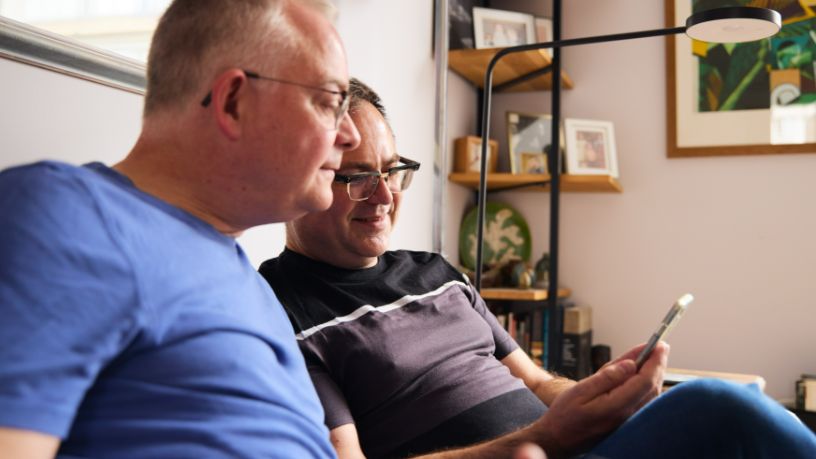It’s okay to enjoy a snack when you’re living with diabetes.
Key takeaways
The connection between diabetes and nutrition should be at the heart of your management plan.
Discover 7 healthy (but satisfying) alternatives to traditional snacks.
Creating a diabetes management plan can be tricky. But when it comes to snacking, there shouldn’t have to be too much guesswork.
The key is to choose nutrient-rich foods that can help you stay fuller for longer, without causing your blood glucose levels (BGLs) to spike too high.
Here, we give you 7 tasty food swaps that are high in fibre, protein and healthy fats, ensuring you get the most out of every bite.
1. Swap bread and crackers for veggie sticks with healthy dips
Raw vegetables like carrots, cucumbers, green beans and capsicum pair perfectly with portion-controlled servings of hummus, low-fat tzatziki or beetroot dip.
2. Swap store-bought muesli bars for homemade trail mix
Create your own trail mix with a small handful of unsalted nuts, seeds and dried fruit.
Making your own mix allows you to control portion sizes and avoid added sugars. Together, nuts, seeds and a modest amount of dried fruit are a great source of healthy fats, fibre, protein, vitamins and minerals.
3. Swap ice cream for unsweetened Greek yoghurt and berries
It goes without saying that unsweetened Greek yoghurt is a much healthier option than ice cream. But, did you know that unsweetened Greek yoghurt is also higher in protein and lower in sugar than regular flavoured yoghurts?
You can enjoy Greek yoghurt with fresh berries or diced fruit to add sweetness.
4. Swap protein bars for a hard-boiled egg
One average-sized egg contains 6 grams of protein and is free of the sneaky ingredients that you’ll find in many store-bought protein bars.1
So, if you’re after a quick, high-protein snack, a humble hard-boiled egg might be just the ticket.
5. Swap milk chocolate for sugar-free or dark chocolate
If you crave chocolate, don’t fear. You can choose sugar-free options or dark chocolate with a cocoa content higher than 70%.
As an added bonus, because dark chocolate has a more intense flavour than milk chocolate, it’s likely that you’ll be satisfied with a smaller amount.
Alternatively, you can check out our range of sweet (and healthy) treats that might help curb that sugar craving.
6. Swap potato chips for plain air-popped popcorn
Popcorn is a great fibre-filled option to keep calories down while satiating your savoury-snack cravings.
You can level things up by adding in some unsalted spices, such as cinnamon, smoked paprika or chilli powder.
Member Health Programs
Discover health cover that's right for you with a range of personalised programs and services designed to support your health and wellbeing.
7. Swap milkshakes for homemade smoothies
A homemade smoothie is a great morning or afternoon snack, and a fantastic way to get in some fibre, protein and antioxidants.
Make a tasty, nutrient-rich blend by adding ingredients like unsweetened Greek yoghurt, mixed berries and low-fat milk.
Adding chia seeds can also give your smoothie an extra dose of fibre, omega-3 fatty acids and different micronutrients, which may help reduce insulin resistance and improve BGLs.2
Diabetes and snacking
Mindful, healthy snacking can be a great way to keep your hunger at bay between meals while maintaining your BGLs.
However, if your diabetes is being treated with insulin or other diabetes medications, you may be at risk of hypoglycaemia, which occurs when your BGLs drop. In this case, snacking may look a little different for you.
When experiencing hypoglycaemia, you may need foods that are high in quick-acting carbohydrates, like sugary or starchy carbs (such as honey, fruit juice, jellybeans and soft drinks).3
If you find yourself needing to snack regularly to avoid hypoglycaemia, it’s a good idea to speak to your healthcare team.
And remember, portion control is crucial when snacking. It may help to consult with an Accredited Practising Dietitian or healthcare professional to personalise your snack choices and adjust your portions based on your specific needs.

At Bupa, trust is everything
Our health and wellbeing information is regularly reviewed and maintained by a team of healthcare experts, to ensure its relevancy and accuracy. Everyone's health journey is unique and health outcomes vary from person to person.
This content is not a replacement for personalised and specific medical, healthcare, or other professional advice. If you have concerns about your health, see your doctor or other health professional.
1Berry, S. (2022). Are protein bars any healthier than chocolate bars? Marginally, but there’s a catch. The Sydney Morning Herald.
2Silva, L. A., Verneque, B. J. F., Mota, A. P. L., & Duarte, C. K. (2021). Chia seed (Salvia hispanica L.) consumption and lipid profile: a systematic review and meta-analysis. Food & Function, 12(19), 8,835-8,849.
3Diabetes Australia. (2022). Hypoglycaemia (hypo) and Hyperglycaemia. Diabetes Australia.
You might also like...
6 diabetes friendly desserts
Just because you have diabetes doesn’t mean you always have to skip the sweet treats. Discover 6 easy and delicious diabetes friendly desserts.
What you shouldn't say to someone with type 2 diabetes
If your loved one has been diagnosed with type 2 diabetes, it can help to know what to say to them.
8 diabetes myths debunked
Diabetes can be complex, so naturally there are a lot of myths floating around about how you get it, treat it and ‘cure’ it. But what’s the truth?
Diabetes 101: What are the different types?
Understanding the different types of diabetes is an important step in learning how to manage your health and preventing serious issues in the future.





